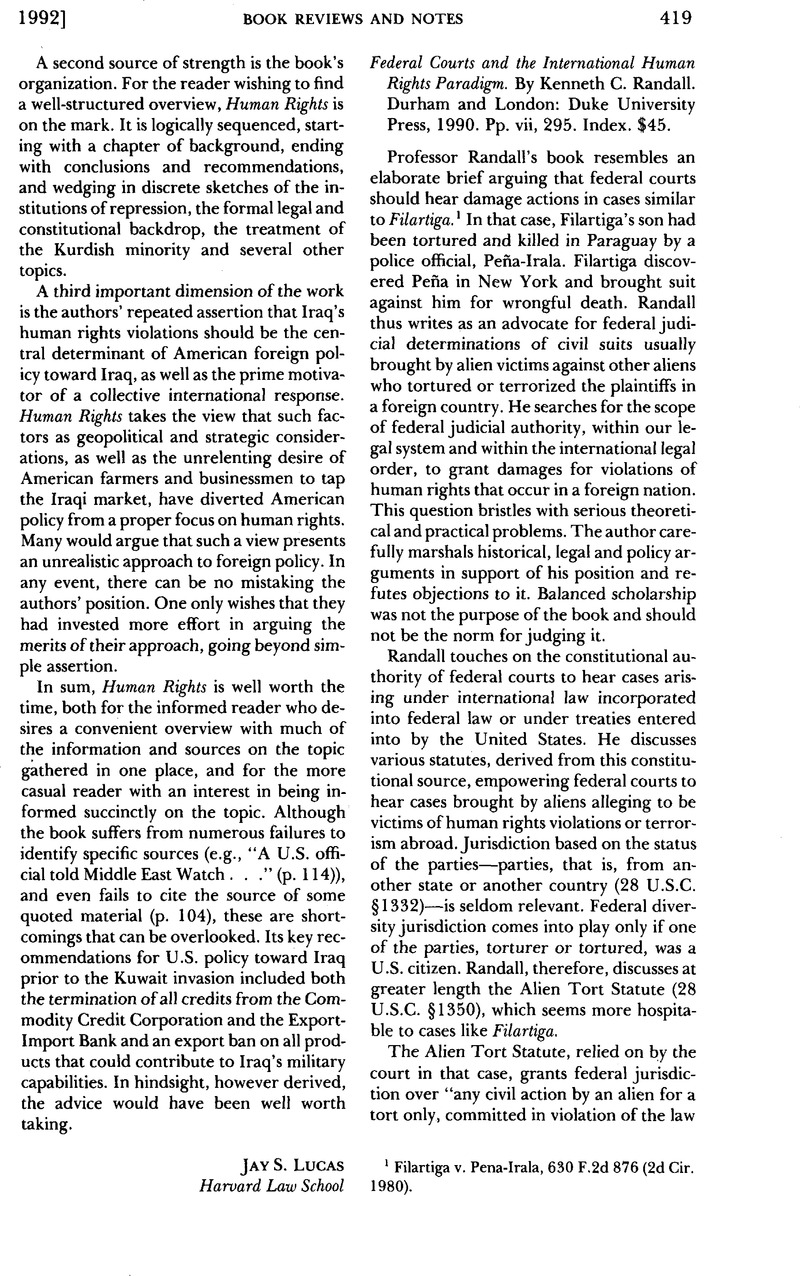No CrossRef data available.
Article contents
Federal Courts and the International Human Rights Paradigm. By Kenneth C. Randall. Durham and London: Duke University Press, 1990. Pp. vii, 295. Index. $45.
Published online by Cambridge University Press: 27 February 2017
Abstract

- Type
- Book Reviews and Notes
- Information
- Copyright
- Copyright © American Society of International Law 1992
References
1 Filartiga v. Pena-Irala, 630 F.2d 876 (2d Cir. 1980).
2 Bivens v. Six Unknown Named Agents of the Federal Bureau of Narcotics, 403 U.S. 388 (1971).
3 In discussing the Bivens doctrine, Randall ig nored, for instance, Bush v. Lucas, 462 U.S. 367 (1983); Chappell v. Wallace, 462 U.S. 296 (1983); United States v. Stanley, 483 U.S. 669 (1987); and Schweiker v. Chilicky, 487 U.S. 412 (1988). In discussing statutory implied rights of action, he relied on Cort v. Ash, 422 U.S. 66 (1975), but ignored more recent cases severely limiting Cort, such as Texas Industries, Inc. v. RadclifF Materials, Inc., 451 U.S. 630 (1981), and Transamerica Mortgage Advisors Inc. v. Lewis, 444 U.S. 11 (1979).
4 See Textile Workers Union v. Lincoln Mills, 353 U.S. 448 (1957) and Verlinden B.V. v. Cen tral Bank of Nigeria, 461 U.S. 480 (1983), apply ing the Foreign Sovereign Immunities Act.
5 376 U.S. 398(1964).




